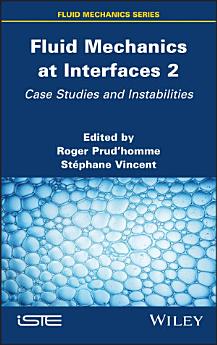Fluid Mechanics at Interfaces 2: Case Studies and Instabilities
About this ebook
Chapter 1 addresses certain aspects of turbulence in discrete mechanics, briefly describing the physical model associated with discrete primal and dual geometric topologies before focusing on channel flow simulations at turbulence-inducing Reynolds numbers. Chapter 2 centers on atomization in an accelerating domain. In one case, an initial Kelvin–Helmholtz instability generates an acceleration field, in turn creating a Rayleigh–Taylor instability which ultimately determines the size of the droplets formed. Chapter 3 explores numerical studies of pipes with sudden contraction using OpenFOAM, and focuses on modeling that will be useful for engines and automobiles.
Chapters 4 and 5 study the evaporation of droplets that are subject to high-frequency perturbations, a possible cause of instabilities in injection engines. The Heidmann model, which replaces the droplets in motion in a combustion chamber with a single continuously-fed droplet, is made more complex by considering the finite conduction heat transfer phenomenon. Finally, Chapter 6 is devoted to a study of the rotor blade surface of a Savonius wind turbine, considering both a non-stationary and a three-dimensional flow.
About the author
Roger Prud'homme is the Emeritus Research Director at CNRS, France. His most recent research topics have included flames, two-phase flows and the modeling of fluid interfaces.
Stéphane Vincent is Professor at the Gustave Eiffel University, France. He leads the Heat and Mass Transfer team of the MSME laboratory. His research focuses on models and numerical methods for multiphase flows.




